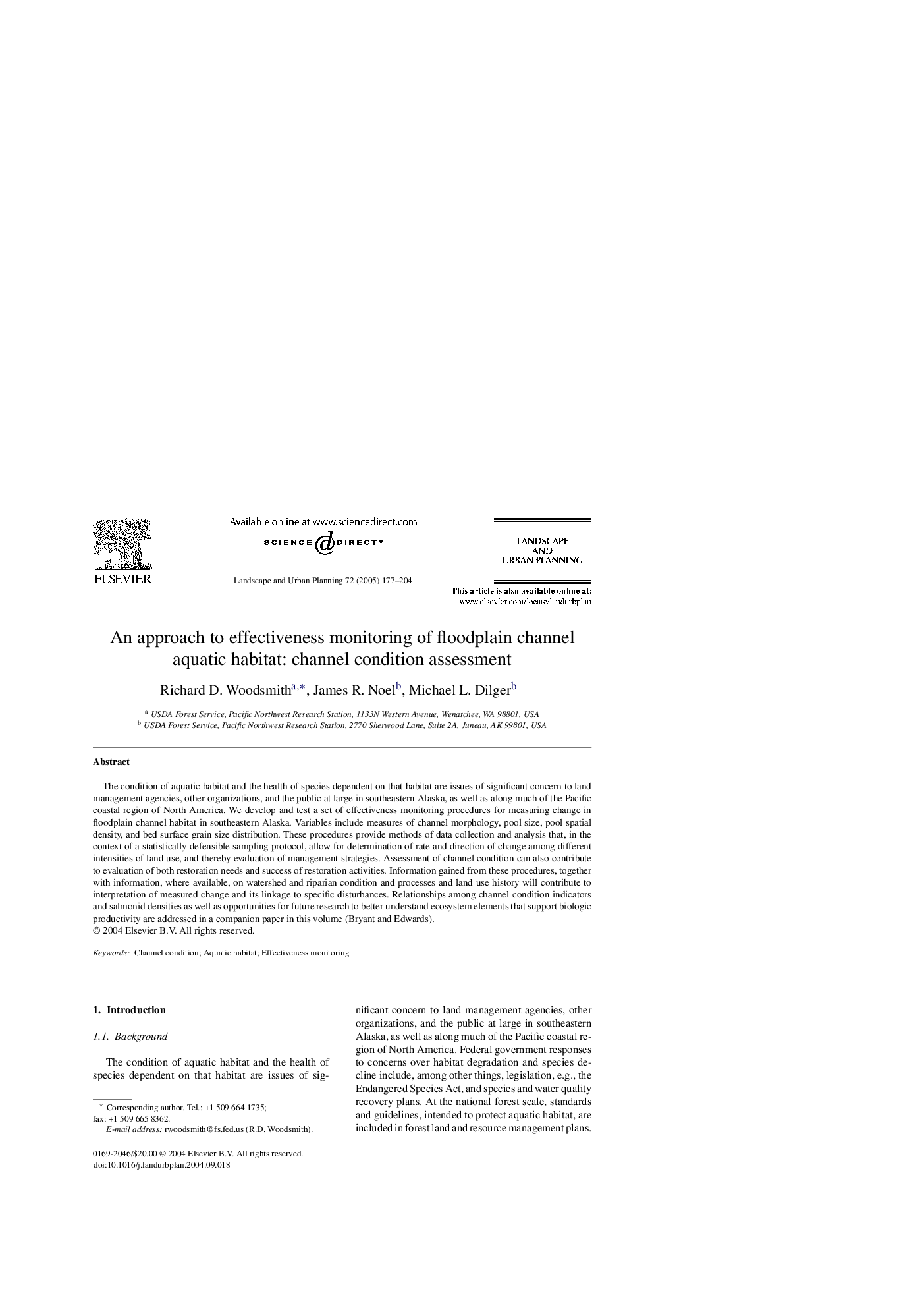| Article ID | Journal | Published Year | Pages | File Type |
|---|---|---|---|---|
| 9736080 | Landscape and Urban Planning | 2005 | 28 Pages |
Abstract
The condition of aquatic habitat and the health of species dependent on that habitat are issues of significant concern to land management agencies, other organizations, and the public at large in southeastern Alaska, as well as along much of the Pacific coastal region of North America. We develop and test a set of effectiveness monitoring procedures for measuring change in floodplain channel habitat in southeastern Alaska. Variables include measures of channel morphology, pool size, pool spatial density, and bed surface grain size distribution. These procedures provide methods of data collection and analysis that, in the context of a statistically defensible sampling protocol, allow for determination of rate and direction of change among different intensities of land use, and thereby evaluation of management strategies. Assessment of channel condition can also contribute to evaluation of both restoration needs and success of restoration activities. Information gained from these procedures, together with information, where available, on watershed and riparian condition and processes and land use history will contribute to interpretation of measured change and its linkage to specific disturbances. Relationships among channel condition indicators and salmonid densities as well as opportunities for future research to better understand ecosystem elements that support biologic productivity are addressed in a companion paper in this volume (Bryant and Edwards).
Related Topics
Life Sciences
Agricultural and Biological Sciences
Ecology, Evolution, Behavior and Systematics
Authors
Richard D. Woodsmith, James R. Noel, Michael L. Dilger,
